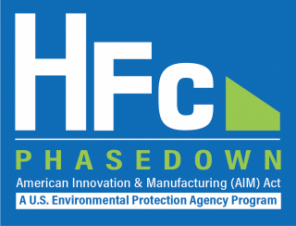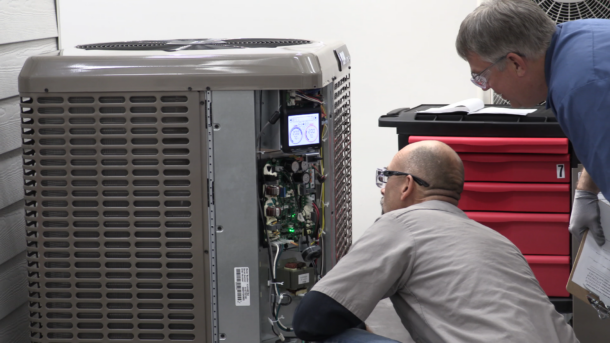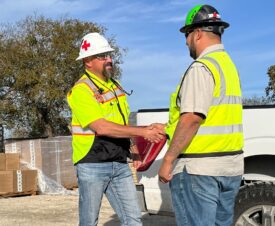 The American Innovation and Manufacturing (AIM) Act mandates an 85% reduction in hydrofluorocarbon (HFC) gases by 2036 and has been top-of-mind for many contractors since it was enacted in 2020. The initial phase of this policy had a negligible impact on refrigerant availability, but the next phase of the Environmental Protection Agency (EPA) regulations – scheduled to deploy in January 2024 – dictates a 30% reduction in HFC use. As the most significant step-down to date, this reduction is poised to create a significant impact on the availability of common HVAC refrigerants including R-410A.
The American Innovation and Manufacturing (AIM) Act mandates an 85% reduction in hydrofluorocarbon (HFC) gases by 2036 and has been top-of-mind for many contractors since it was enacted in 2020. The initial phase of this policy had a negligible impact on refrigerant availability, but the next phase of the Environmental Protection Agency (EPA) regulations – scheduled to deploy in January 2024 – dictates a 30% reduction in HFC use. As the most significant step-down to date, this reduction is poised to create a significant impact on the availability of common HVAC refrigerants including R-410A.
Developing a proactive strategy now will help ease the transition and minimize the risk of stranded equipment in the future. As contractors develop their strategies, it is important to prioritize three key goals: R-410A recovery and reclamation; understanding low-global warming potential (GWP) alternatives; and A2L refrigerant safety.
Recovery and Reclamation
Although the 2024 step-down will be considerably larger than what was required in 2022, it is important to remember that the AIM Act is a phase-down, not a phase-out. This means the reuse of R-410A is currently permitted by the EPA. And because there is no known drop-in replacement for R-410A, recovery and reclamation are necessary to ensure future serviceability of existing equipment.
Historically, R-410A recovery rates have been low, especially among small-charge residential units.[1] The process can be time-intensive, and the value of the recovered gas has not always been economically advantageous for contractors. As the baseline supply of HFCs continues to wane, the demand for R-410A will likely drive a higher return on investment. Contractors can plan ahead by establishing strong relationships with their distributors and EPA-certified reclaimers. It is important to understand the requirements for minimum recovered gas volumes and purity levels, as well as any buy-back guarantees that may be in place to safeguard financial return. Contractors can also consider storing and banking recovered R-410A until market values are in their favor.

Understanding Low-GWP Alternatives
As refrigerant regulations continue to progress, HVAC manufacturers are developing equipment that will operate using next-generation, low-GWP alternatives to HFCs. Alternatives such as R-454B can yield a 78% decrease in GWP while improving HVAC system efficiency and maintaining similar operating characteristics to R-410A. In fact, R-454B has very similar pressures and temperatures to R-410A and also requires less charge than R-410A.
Currently, HVAC equipment regulations only apply to new systems. The conversion of existing systems is not required, and the continued use of existing equipment is permitted pending the availability of R-410A or other approved drop-in refrigerants, should they become available. Although new residential and light commercial systems will not be required to use low-GWP alternatives until January 1, 2025, some manufacturers anticipate launching products with low-GWP refrigerants in early 2024.
A2L Refrigerant Safety
For many applications, R-454B systems will usher in the first instance of ASHRAE A2L refrigerant handling and this means a new level of safety training is necessary. The EPA has recognized A2L refrigerants as mildly flammable. Therefore understanding safe A2L handling, storage and transportation best practices prior to new equipment arrival is paramount to a successful changeover.
Contractors can begin by reviewing the resources available within the AHRI Safe Refrigerant Transition Task Force (SRTTF)[2], completing the ACCA A2L refrigerant training[3] and ensuring technicians are EPA Section 608-certified. Also, reputable resources from manufacturers like Johnson Controls, ACCA (Air Conditioning Contractors of America), NATE (North American Technician Excellence) and ESCO (Energy Service Company) should be used during this transition. For example, the Johnson Controls Ducted Systems Regional Technical Service Managers will provide distributor service personnel with A2L Introductory Service and Installation Training.
Contractors will also want to become familiar with ASHRAE and UL standards that address the potential hazards of A2L leakage, mitigation response and maintenance requirements. Additionally, it is important to understand A2L codes at the local and state levels prior to installing new equipment.
As refrigeration regulations continue to progress, robust R-410A recovery practices, proactive training, and a solid understanding of A2L safety can help to ensure a successful transition to low-GWP refrigerants. Although the next HFC step-down is still months away, contractors who prepare now will be better poised to navigate the transition with limited disruptions and gain a leg-up on their competition as the availability of R-410A declines.
[1] Environmental Protection Agency (EPA): Analysis of the U.S. Hydrofluorocarbon Reclamation Market:
[2] Air Conditioning Heating and Refrigeration Institute (AHRI) Safe Refrigerant Transition Task Force (2023), https://www.ahrinet.org/advocacy/safe-refrigerant-transition-task-force.
[3] Air Conditioning Contractors of America (ACCA) A2L Refrigerant Training (2023), https://www.acca.org/education/a2l-refrigerants.
Stakeholders, Drivers, and Practices (October 2022), https://www.epa.gov/system/files/documents/2022-10/Draft_HFC-Reclamation-Report_10-13-22%20sxf%20v3.pdf.




Join the conversation: